#landsknechte
Explore tagged Tumblr posts
Text
RPG about/inspired by German Landsknechte where your clothing grants equipment bonuses based purely on what colour it is. A red tunic grants different bonuses from a blue tunic, which grants different bonuses from a yellow tunic, and so forth; there'd be different sets of colour-based bonuses for pantaloons, gloves, hats, etc. Striped, slashed, particolour, etc. garments would offer hybrid bonuses based on the specific combinations of colours involved (and potentially even those colours' locations; e.g., a tunic with two differently coloured sleeves which grants different bonuses to each arm) to further fine-tune your build. Basically, what I am describing is a game where you have a concrete mechanical incentive to dress like this:
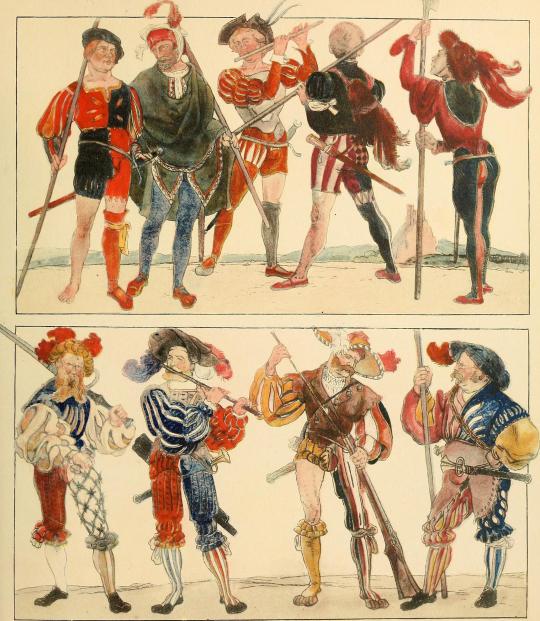
3K notes
·
View notes
Text

Landsknecht i am
#medieval#knight#landsknecht#artwork#15th century#14th century#fantasy#art#drawning#armor#landsknechte#16th century#medieval fantasy#middle ages#dark ages#armour#medieval art#historical#lore#bad war#worldbuilding#ram#caprine#sheep#furry oc#sfw furry#furry art#anthro#anthro art#anthropomorphic
10 notes
·
View notes
Text
hooooly balls, it’s Landsknecht Mario Brothers?!?
combining Covid masks with the moustaches: *chef’s kiss*








Gabe Freeland took some lovely photos of us at Momocon!
#landsknecht#mario and luigi go to war#landsknect#mario#mario brothers#luigi#cosplay#landsknechte#slashed doublet#slash and puff
19K notes
·
View notes
Text




Last day at the festival !
9K notes
·
View notes
Text

Knight and a secret to share
#my art#digital art#artists on tumblr#ttrpg art#ttrpg oc#knight aesthetic#wreg#ok ik this is landsknecht inspired outfit and not knightly nor even close to canon#but I just wanted to draw him cheeky and happy#wreg if he slayed#also I was asked to draw the side of his face before scarring so here u go
2K notes
·
View notes
Text



This dog-head soldier, affectionately known as Brother Peter was a former lay brothers (who take simple vows and are expected to perform manual labor for the monastic community) all of the brother signed the deeds of surrender when the abbeys were closed. Peter committed to manual work and insistence on self-sufficiency, he took the vow of celibacy, dressed similarly to peasants, landsknecht kit is a stark difference to what he used to wear so i think something with less gaudy colour is more well suited. He's describe as "a creature with unusual stature and frame—being tall, lean, having well-proportioned limbs except for his large head" - by a so called private historian "The crown of his head is bare, the brow exposed and furrowed, while from behind and about the sides falls a mane of coarse hair, black as the forest’s depth—more beast than man. His appearance was remarkably unattractive and his face bore a constant air of impassive, especially when speaking; his eyes were small and grey, his mouth wide, his teeth are sharp with standing prominent."
#ocs#oc art#artist on tumblr#Landsknecht#werewolf#brother Peter#creatures design#renaissance fashion#art#illustration
960 notes
·
View notes
Text

when your mercenary captain starts talking about pay cuts, so you show her one of these. by Centuriichan
609 notes
·
View notes
Text

Rare knight can survive werewolf encounter. Yet, the young maiden picked up a sword. Soon, she became Thunder Kingdom’s embodiment of loyalty, courage, and honour under the name of Dame Brightheart.
#warriors cats#warriors#wc art#thunderclan#brightheart#knight#lady knight#i know she is orange and white#just couldn't resist the urge to give her landsknecht inspired fancy design#hope you'll enjoy it anyway!!#buriedinembers
1K notes
·
View notes
Text

Armbrust-Schuetze
205 notes
·
View notes
Text



⚜️ Landsknecht armor, ca. 1520-1540
Made in our Creative Workshop "Steel Legacy"
⠀
Photo by Sergey Kozlov
⠀
- -
⚜️ Доспехи Ландскнехта, около 1520-1540 гг.
Изготовлены в нашей Художественной Мастерской "Стальное Наследие"
⠀
Фото: Сергей Козлов
#medieval#средневековье#middleages#history#armor#armours#история#harnisch#armadura#armour#landsknecht#доспехи#ландскнехт
641 notes
·
View notes
Text
Landsknechte-centric RPG where your equipment slots are perfunctory for the upper body and hyper-detailed for the lower body, rather than the other way 'round as is customary. Like, for the upper body you've basically just got "head" and "chest", and then for the lower body you have separate equipment slots for hose, garters, pantaloons, belt, belt pouch, boots, boot tassels, codpiece, codpiece accessory, and those little ribbons you tie about your knees.
2K notes
·
View notes
Text
Панянка ландскнехт в обладунках з 16-го сторіччя. "Можна вже їх лупашити, мій пане?"
A quick sketch of a landsknecht lady. "Can I hack at them already, my liege?"

#my art#quick sketch#warmup#landsknecht#historical fashion#historical armour#16th century#украрт#український tumblr#укртумбочка
283 notes
·
View notes
Text










Happy MAR10 Day!!
Please enjoy some of our photos with Amanda Swanson photography!
#mario and luigi go to war#our cosplay#mario brothers#mario#luigi#finished costumes#landsknecht#mar10#mar10 day
2K notes
·
View notes
Text
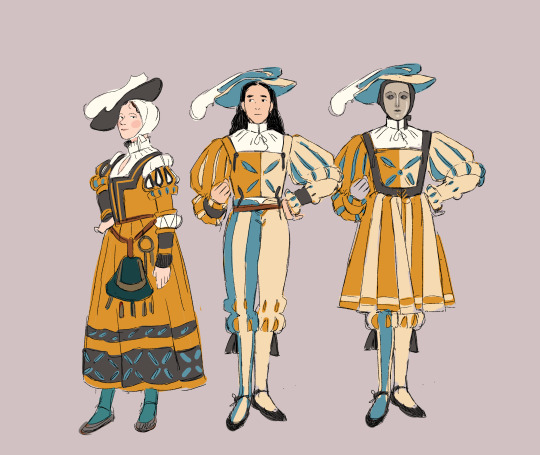

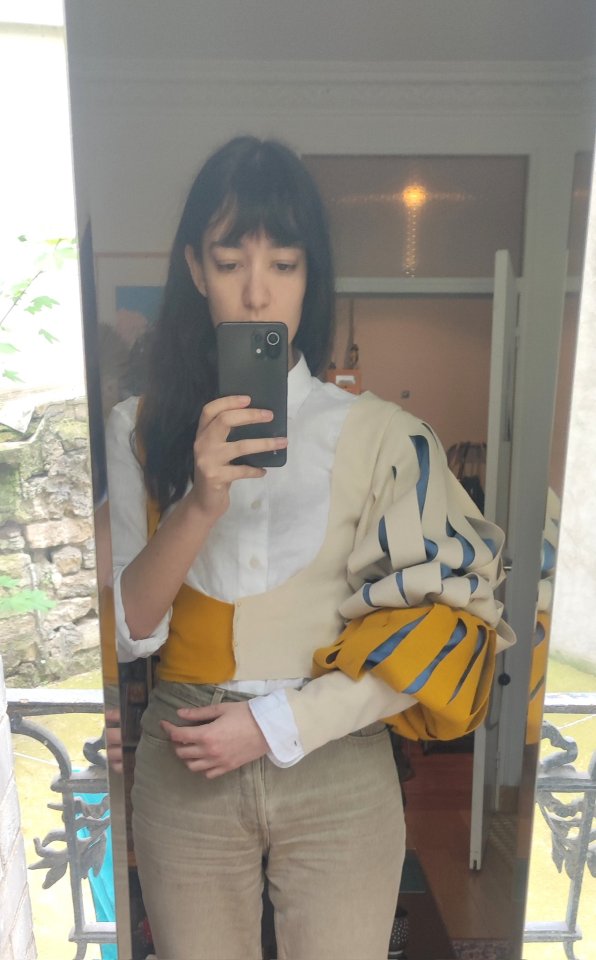
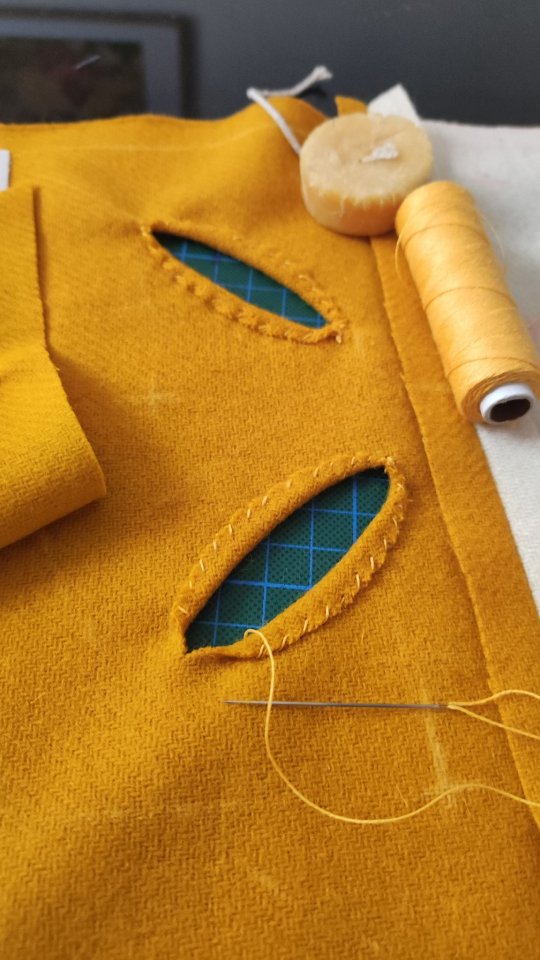

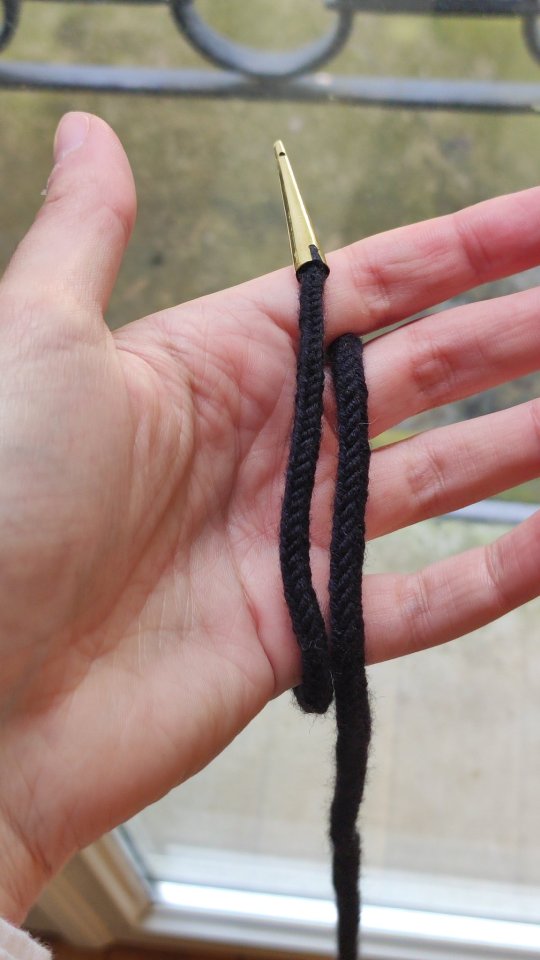
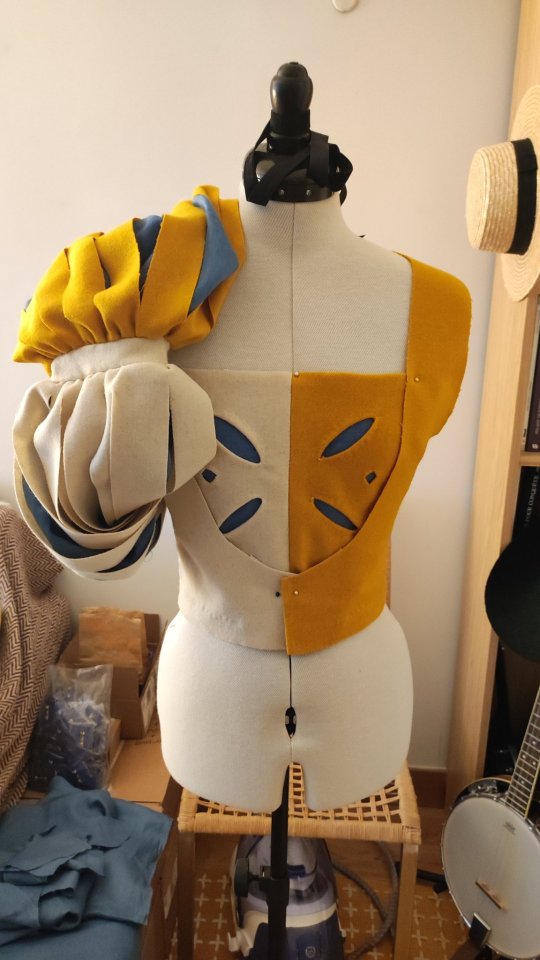




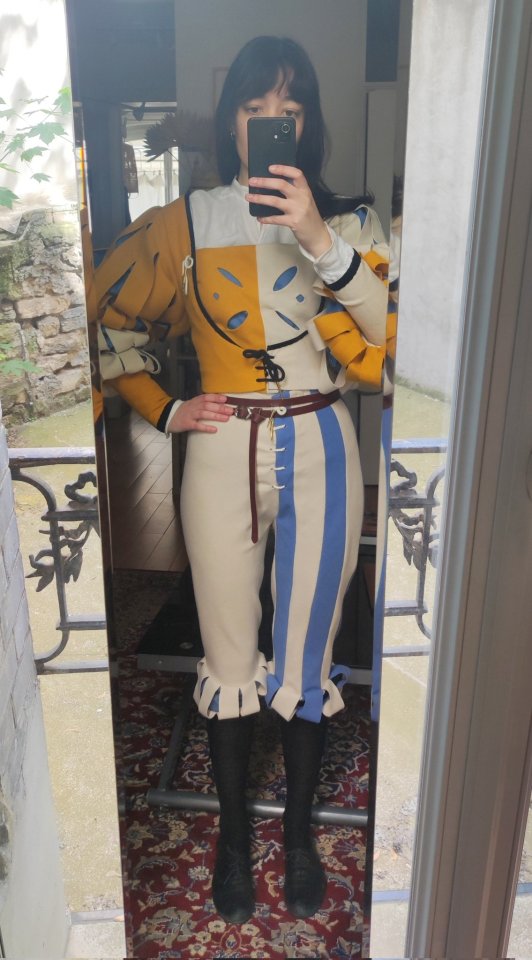
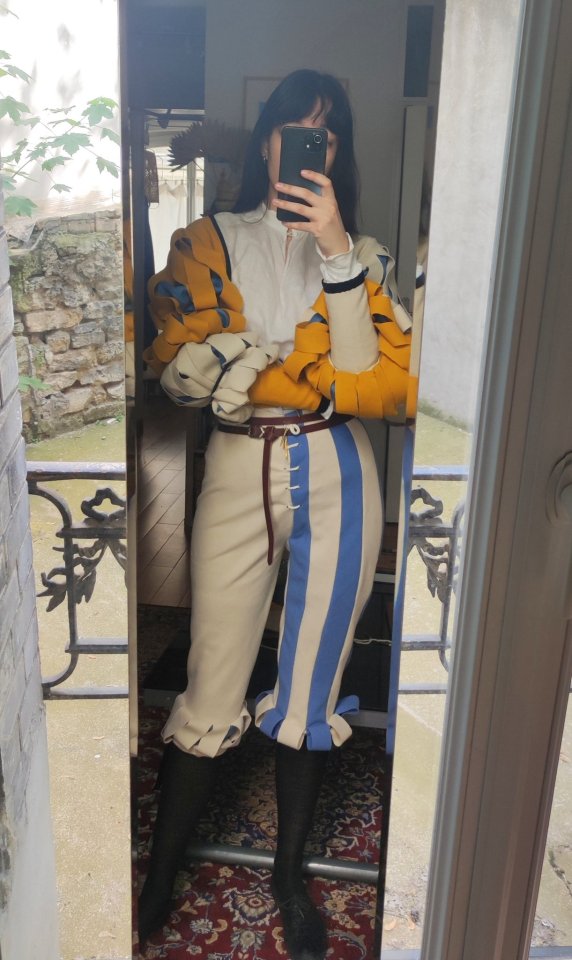

Progress on my current project ! Having some with stripes and slashing this time around. Didn't take any progress photos for the hosen/pants because it broke my brain a little, lol. I also started doing fingerloop braiding for the lacing cords.
I still have to fix a few things on there, including fixation on the brustfleck, and after that onwards to making the hat !
#historical costuming#sewing#16th century#landsknecht#germanic guard#renaissance#it's landsknecht inspired but I also like to think of it as#jestercore#first time draping an drafting everything myself woo !#my art
12K notes
·
View notes
Text

Silk doublet and Pluderhosen, Northern Germany, ca. 1580/90.
Another personal favourite of mine: a pair of late 16th century Pluderhosen combined with a doublet from the same time. While both garments were most likely made by a tailor from the Hanseatic city of Einbeck, they were not meant to be worn together and were just placed like this by the museum for exhibition. While doublet and breeches look beautiful, they were heavily altered during the 19th and 20th century; the doublet´s silk sleeves as well as the red silk lining of the Pluderhosen are later additions and not a genuine 16th century feature.
The front of the doublet is slightly padded to form a so-called "peascod-belly", imitating 16th century breastplates. The buttons are just for decoration, the doublet originally closed with hooks and eyes. The most prominent feature of the Pluderhosen is the massive codpiece, which is lavishly decorated.
#16th century#historical fashion#renaissance fashion#historical costuming#fashion history#16th century fashion#renaissance#history#landsknecht#historical clothing
237 notes
·
View notes
